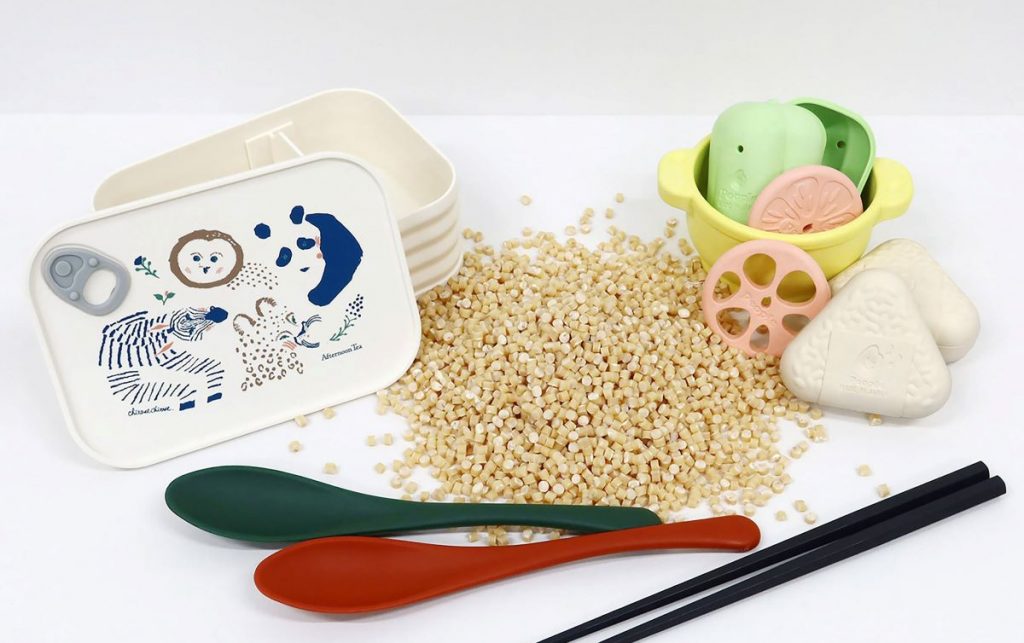
'Shellmet' helmets made of biomass plastic derived from scallop shells.
Read the full story on Japan 2 Earth - Bioplastics: Japanese SMEs Leading Advancements in the Industry
Small and medium-sized venture companies are increasing their presence in the field of biomass plastics, or bioplastics, which produce less carbon dioxide than conventional plastics made from petroleum.
Using proprietary technologies, these companies are producing bioplastics from a range of biomass resources. These include rice unsuitable for human consumption, seashells, and wood waste. Some have even launched finished products made from bioplastics.
Scallop Shells Become Bioplastics
One such company, Osaka-based Koushi Chemical Industry, developed its "Shellstic" bioplastic using scallop shells as raw material. Researchers at Koushi Chemical opted to use these shells, which have calcium carbonate as their main component. The shells are ground into a powder and then mixed with waste plastic. The resulting hybrid plastic can reduce CO2 emissions by up to 36% compared to newly-produced petroleum-based plastics.
Staff at Koushi Chemical came up with the idea of upcycling scallop shells when they learned of a scallop-producing region that was having trouble disposing of leftover shells after scallop processing. The shells are provided by Sarufutsu Village in the far north of Hokkaido, one of the most well-known scallop-producing areas in Japan.
Koushi Chemical also developed the "Shellmet," a helmet made from Shellstic. Preorders for the helmets on the Makuake crowdfunding site far exceeded the company's targets. The company aims to begin filling orders for the helmets in May, and then launch general sales in June.
Rice as Biomass
Tokyo-based Biomass Resin Holdings is expanding production of its "RiceResin" bioplastic made from rice not suitable for consumption. The firm constructed its third factory in December of 2022 in the town of Namie in Fukushima Prefecture.
The company is growing rice in paddies in Namie that had been left fallow after the 2011 nuclear accident. Its other factories are located in Minamiuonuma City in Niigata Prefecture and Minamata City in Kumamoto Prefecture.

RiceResin mixes rice with the raw materials for conventional petroleum-based plastic at ratios of up to 70% rice. CO2 emissions are decreased by the amount of rice used.
The company is expanding uses of its bioplastic to include items such as spoons, toys, and garbage bags.
Continue reading the full story on Japan 2 Earth.
And find more great articles on the environment and the challenges of achieving the SDGs on our new website Japan 2 Earth (J2E), sparking a transition to the future.
RELATED:
- Bioplastic That Makes Better Use of Plant Waste Grows in Popularity
- From Benches to Bio-Toilets, Upcycling Proposals Selected for Osaka Expo
(Read the article in Japanese.)
Author: Shunichi Takahashi








